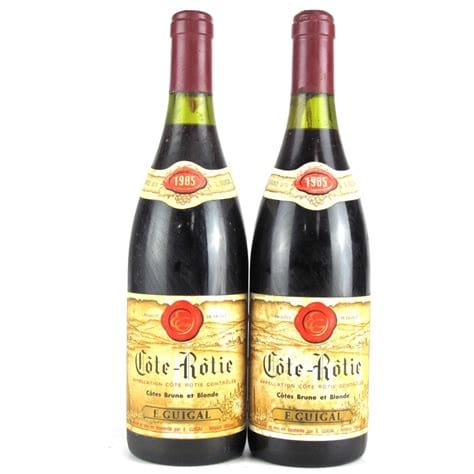Côte-Rôtie is a small region, covering fewer than 500 acres. It spreads above the village of Ampuis. Sitting on the Western bank of the Rhône river, the vines face south and southeast for maximum ripening, hence the name “roasted slope.” When we call these slopes, we mean it! In some places, the land is as steep as 60 degrees. The soil is extremely unstable, requiring special terracing and stone walls to keep the soil in place. Erosion is a big problem, and beyond constant maintenance of the terraces and stone walls, people will even collect fallen soil at the base of the hill and bring it back up.

Côte-Rôtie is always red and made from the Syrah grape, as with all other Northern Rhône appellations. Uniquely, Côte-Rôtie allows the inclusion of up to 20% Viognier, a white grape. This is very unusual, and the grapes must be co-fermented or mixed together before fermentation.
The soil is crumbly schist, with two distinct types. The Côte Blonde is composed of decomposing pale granite and schist, and the Côte Brune is a much darker iron-rich schist. Legend has it that a 16th Century lord named the two distinct areas after his two daughters, one blonde, and one brunette. The climate here is continental, with cold, rainy winters, and hot summers. It can be extremely windy here, and the vines are trained to be tied in pairs at the top of an A-frame, to protect them from blowing around.
These wines are powerful reds made to be drunk after at least five years, but the best can be aged for longer. Like all Syrah, they have black fruit, meat, and pepper characteristics, but are distinct from their elegant floral notes.

